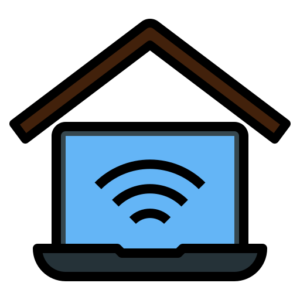A Fundamental Reordering of the Sector?
Six months into a global pandemic, with no end in sight, it is fair to ask if the nonprofit sector is fundamentally reordering itself in response to these unprecedented times. Organizations that were long wedded to in-person interaction among colleagues and with clients have learned to adapt to phone and videoconferencing for everything from board meetings to client services to member engagement. The success with which this shift has been accomplished has resulted in widespread recognition that, among other things, the sector might not need all the office space for which it is currently paying. At the same time, program digitization efforts that might have taken years to bear fruit, and would have met with staff resistance, have been accomplished in weeks, with everyone of necessity on board. Where are the Luddites? Probably on a group chat via Zoom.
These two factors – the shift to remote working, and the acceleration of online program delivery – have rapidly reordered the work of the sector, redefined expectations, and raised new challenges. But the nonprofit sector is large and diverse, and different kinds of nonprofit work require a different response to the challenges presented by the pandemic. We’ve classified nonprofits into three types of organizations: the Remote Workers, the ZoomHelpers, and the Reinventors.
 Remote Workers
Remote Workers
Simply put, for some nonprofits, remote work, works. These groups may have initially found the sudden transition to remote work a challenge, based on a strong office-based culture or an accountability system that depended on butts-in-seats as a proxy for work getting done, but they quickly learned to adapt. For the most part, their work today continues undeterred, if remote. This subgroup of nonprofits includes legal, advocacy, and research organizations, as well as others which in the pre-COVID environment relied primarily upon professionals, who accomplished their work for the most part through meetings, writing, or talking on the phone. These kinds of activities were most easily transitioned to remote work. A prime example of this type is the ACLU, which has kept up its critical advocacy throughout the pandemic while its attorneys, organizers, communicators, fundraisers, and administrators work remotely. Something may be lost in the daily interaction of coworkers, but overall, Remote Workers have adapted. The question for this group of organization is: When the pandemic ends, will we require people to return to the office, or will working remotely, with its savings in commute costs, wear and tear, and facilities overhead, be the new norm?

ZoomHelpers
These nonprofits have been able to refocus, providing the same pre-COVID in-person services, but doing so through online means such as the Zoom platform. This subgroup includes health, mental health, and other individual and group support or counseling services. In place of office-based visits, many doctors, therapists, and other helpers are now “seeing” their clients remotely. The virtual doctor’s visit and the phone or Zoom therapy session have quickly become standard practice, aided by (at least temporarily) relaxed federal and state privacy guidelines. Both providers and consumers of these services see pluses in the convenience of avoiding travel to and from appointments, as well as minuses in the lack of direct human contact. Successful management of this transition requires access to tools and circumstances not within every consumer’s reach. For an effective virtual session, both parties need, at a minimum, a telephone, and preferably a laptop with a good Internet connection. The consumer also needs privacy, which can be in short supply within a crowded household. As one social worker says of her teenaged clients, “They can’t talk to me about an abusive parent or a concern that they might be pregnant, with their family sitting next to them on the couch.” The questions for this group are: Will these services be as effective as in-person services? And How can we serve those clients who lack the basics of equipment and privacy?
 Reinventors
Reinventors
These nonprofits have been forced to completely rethink their business model, approach to service delivery, and staffing structure. These groups perform work that require in-person engagement with clients/customers/members. The options available to the ZoomHelpers are either not possible or not appropriate. For example, museums have long offered online educational programs while still relying principally on people coming (and paying) to visit their collection in person. Suddenly, in the COVID-era, the online tail is now wagging the live-visit museum dog, leaving huge gaps in visitor experiences and, critically, museum revenue. Similarly, afterschool providers offering positive youth development opportunities, sports, or homework support have always relied upon site-based group programming. They are now forced to rethink how to meet their missions without in-person contact. For example, Coaching Corps, recruits and trains coaches for sports teams in under-resourced communities. With the pandemic, nearly all youth sports have been halted, so what are the coaches – and Coaching Corps – to do? The organization pivoted to recruiting and supporting volunteers for food banks, blood drives, and other essential services. It’s latest innovation has been to train school district staff remotely to conduct physical activity sessions with students that also teach social emotional skills. Essentially, Coaching Corps has doubled down on the volunteer part of its mission while temporarily (but who knows for how long?) lightening up on the sports connection. The question for these nonprofits is: If the pandemic goes on much longer, how do we meet our mission and generate revenue or donations to support our work?
As the pandemic continues to disrupt life for months or possibly years, nonprofits are using all their energy and creativity to respond, with a focus on continuing to meet their mission. But as we have just seen, the impact of Covid-19, and the degree of challenge it presents, from adaptation to reinvention, varies by the type of work each organization is engaged in. What the Remote Workers, ZoomHelpers, and Reinventors all share, however is uncertainty. As consultants to the sector, we remember clients in March and April planning to hunker down for three or four months, get by on a Payroll Protection Program Loan, temporary furloughs, or drawing on reserves. They assumed that by summer, things would return to something like normal. As summer arrived and COVID stayed, those projections shifted to 2021. Surely by January, many leaders reasoned, it would be safe to bring groups of children together, visit a museum, or return to the office. As Labor Day approached, signaling the official end of summer, we began advising clients to keep their January reopening projection, but to plan for January 2022 not 2021. If we get out of this quicker, great, but every organization needs to think through what remaining closed for another sixteen months might mean.


Helpful and incredible blog post it is! I recently came across your blog about a trending topic. I love to read about the concept you have mentioned. I might appreciate your content and your efforts. Thanks and keep sharing. Would like to read more from your side.
Great info. I like your articles. Thanks for your sharing this.